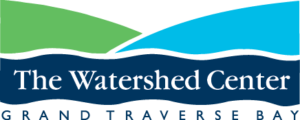PROJECT:
Chloride Studies
Monitoring the effects of deicing salts on nearby streams
Each year, over 20 million metric tons of road salts are applied to roads across the United States. The use of road salts and other de-icing agents is particularly prevalent in the Midwest and Northeast where winters are long, snowfall is abundant, and the pressure to maintain clear and safe roads is widespread.
Road de-icing agents often contain salts such as sodium chloride, magnesium chloride, potassium chloride, and calcium chloride that break apart when they dissolve in water. This human-induced input of dissolved salts into surface water and groundwater is a major driver of increased salinity in freshwater systems, especially urban streams like Kids Creek.
Chloride is known to have adverse and lethal effects on fish, invertebrates, and plants and may impact aquatic populations and food web dynamics. Further, high chloride concentrations in freshwater lakes can result in physical changes including annual lake mixing processes. To protect freshwater from salinization, chloride thresholds have been established by state and federal agencies. Even with these guidelines in place, it is predicted that many freshwater lakes with even low to moderate surrounding impervious surfaces will have chloride levels exceeding federal thresholds in the next 50 years if trends continue (article).

Project Status: In Progress
Equipment:
- 2 EnviroDIY Mayfly automated monitoring stations
- Hand-held specific conductance monitoring probes
Project Partners:
- Trout Unlimited
- Volunteers
Funding Sources:
- Trout Unlimited
- Paddle Antrim
Kids Creek
Resource managers speculate that elevated levels of chloride is affecting aquatic life in Kids Creek and adding to the creek’s impairment. In 2020, The Watershed Center partnered with Trout Unlimited to begin monitoring chloride in Kids Creek using two EnviroDIY Mayfly automated monitoring stations on the main branch of the creek. These stations collect conductivity and water temperature data every 15 minutes and instantaneously upload data to a website. Conductivity measures the ability of a liquid to pass an electrical current and is impacted by charged ions within a solution. When deicing salts containing chloride dissolve in water, the chloride ion is charged; therefore, conductivity is a substitute measurement for chloride in freshwater.
View real time data:
3rd Street | Silver Lake Road | Browse stations
Comprehensive Study
Preliminary monitoring data showed an increase in conductivity in Kids Creek during winter months, prompting the Michigan Department of Environment, Great Lakes and Energy in 2022-2023 to conduct a comprehensive study on surface water and groundwater in the watershed.
Data collected showed that aquatic like is likely being harmed by high chloride concentrations in Kids Creek during winter months. Pulses of chloride move through the stream after snowstorms and during snowmelt events as deicing agents are washed from paved surfaces and released from snowbanks.
Elk River Chain of Lakes
Preliminary findings of increased conductivity in Kids Creek encouraged The Watershed Center to evaluate whether elevated chloride levels are found throughout the entire Grand Traverse Bay watershed. While real-time monitoring stations are expensive and require a certain level of expertise to operate, conductivity monitoring probes are quick, low cost, easy to use, and can be deployed in multiple locations. Using these probes, trained volunteers collected baseline data from numerous locations in the Elk River Chain of Lakes in 2023. This study indicates that chloride is not elevated at the locations sampled at this time. We intend to repeat this study in 2028.
Responsible Deicing Salt Awareness
The Watershed Center is dedicated to raising awareness of the impact of deicing salts on water quality. We educated individuals, neighborhood associations, businesses, and municipal road maintenance departments about ways to reduce and responsibly use deicing salts.
We advocate for road maintenance managers to apply deicing agents only when necessary, use the appropriate amount of deicing salts based on conditions, consider environmentally friendly alternatives, store deicing salts properly, and sweep up excess deicing salts after application.
